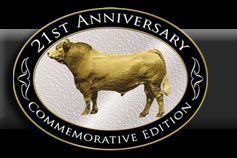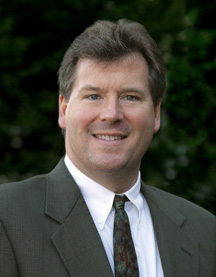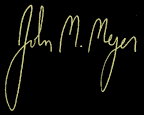

 The subject of breeds of cattle is as deep and interesting as the people who have an appreciation of fine cattle. Purebred cattle are the world’s strongest symbol of agriculture. The economic impact of purebred cattle the world over is enormous.
The subject of breeds of cattle is as deep and interesting as the people who have an appreciation of fine cattle. Purebred cattle are the world’s strongest symbol of agriculture. The economic impact of purebred cattle the world over is enormous.
From a societal perspective, breeders of purebred cattle are excellent stewards of animal husbandry and the land their cattle live on. Those who work with cattle and allow them to develop to their fullest potential enjoy the camaraderie and friendships of other people who appreciate the art of breeding.
I am fortunate to have been involved with purebred cattle all my life. My passion for the registered industry was inspired by my late father, Eugene, who was editor of Hoard’s Dairyman magazine, “the dairymen’s bible.” Over the years, I spent a lot of time with him at the Hoard’s Dairyman registered Guernsey farm in Wisconsin where I learned about pedigrees, corrective matings, and the proper way to work with and around cows, the foster mother of the human race.
During my childhood, I spent a good portion of my summers at my grandparents’ farm, Mallory and Mallory Registered Angus in Iowa. This experience gave me good first-hand knowledge on the differences and similarities there are in managing and working with beef and dairy animals. However, the basic laws of breeding are the same.
Professionally, I have had the pleasure of working with cattle breeders and their animals through my work as Executive Secretary of the Brown Swiss Cattle Breeders Association of the USA from 1996 through 2001, and as Chief Executive Officer and Executive Secretary of the Holstein Association USA, Inc. since 2001. The Holstein Association USA, Inc. is comprised of over 30,000 members from across the United States and registers over 300,000 animals annually.
Breed associations are considered the oldest of farm organizations in this country. Members of these associations have contributed greatly to the genetic progress of the cattle described in this book.
John Dawes and the late Herman R. Purdy had an excellent idea when they came up with the prospect of writing the first edition of Breeds of Cattle which was published in 1987. The book was the first of its kind and the most accurate, comprehensive document ever published on different breeds of cattle.
Co-author of the first edition of Breeds of Cattle and of this one, John Dawes has owned cattle for 40 years. A prolific writer, Mr. Dawes was educated at Penn State University where he later counseled students in the Division of Undergraduate Studies. The first cow he ever purchased, a Georgina heifer, was acquired from Penn State.
Today Mr. Dawes resides at Huntingdon Farm in Alexandria, Pennsylvania which he and Mr. Purdy purchased in 1970. The farm has been the home of many championship animals. The herd at Huntingdon originated with both purebred Angus and Polled Hereford cattle and was improved by the use of Angus Herd Improvement Records and Polled Hereford Guideline Programs.
Currently, Mr. Dawes is Executive Director of the Foundation for Pennsylvania Watersheds. He acted as alternate Commissioner on Pennsylvania Governor Ridge’s 21st Century Commission on the Environment and was part of the policy team creating guidelines for the Heinz Endowments Environment Program. He served as President of the Board of POWR, the Pennsylvania Organization for Watersheds and Rivers. Visitors to Huntingdon Farm appreciate the life-long commitment to cattle, land, and watershed management.
Herman R. Purdy was a Professor at Ohio State University and Penn State University where he was in charge of pedigreed livestock and served as coach of the livestock judging team. The late author was recognized as the world’s most renowned beef cattle judge.
After retiring from Penn State University in 1972 as Professor Emeritus, Mr. Purdy spent much of his time consulting others on cattle breeding and managing his beloved Huntingdon Farm. The respect others had of the Professor is evidenced by the fact that he was asked to pass judgment on beef cattle at over 1,200 shows around the world.
The friendships developed through one’s work with pedigreed cattle last a lifetime. As President of the National Pedigreed Livestock Council Board of Directors, I have had the distinction of working with Dr. Bob Hough, the co-author of this masterpiece and former Executive Secretary of the Red Angus Association of America. Dr. Bob is the consummate innovator and visionary in beef circles. Starting with the Red Angus Association in 1994, he designed and launched the Feeder Calf Certification Program and implemented a program for Red Angus’ first carcass APDs (apparent protein digestibility). Additionally, in order to further advance the value of Red Angus feeder calves, Bob negotiated the first breed pricing grid with a major packer.
Under Bob’s outstanding leadership, in January of 2002, Red Angus had the seed stock industry’s first complete genetic predictions for reproduction in beef cattle. This was followed in January 2004 with the unveiling of the first master cow maintenance EPD (expected progeny difference).
Under Dr. Hough’s guidance, the Red Angus Association was recognized for its breed leading performance programs, a respected commercial marketing program, and an excellent, professional office. His leadership directed the Red Angus Association through its period of most significant growth. In 2004, I had the pleasure of joining Bob on the program of the Red Angus Association of America’s 50th Anniversary Celebration in Denton, Texas. At that event Bob was introduced as one of the 50 most influential people in the history of the Red Angus breed.
This book provides an excellent historical overview of breeds of cattle raised in the United States and internationaly, along with information on each association’s breed registry. The beautiful 19th Century artwork provides readers with an idea of what these animals may have looked like in the past. The excellent descriptive essays on phenotype and modern photographs provide outstanding visuals reflecting on what has changed and the changelessness.
This keepsake deserves a special place in the library of every college, university, and high school in the United States, and in the homes and offices of everyone who has ever owned purebred cattle or has an interest in them.



